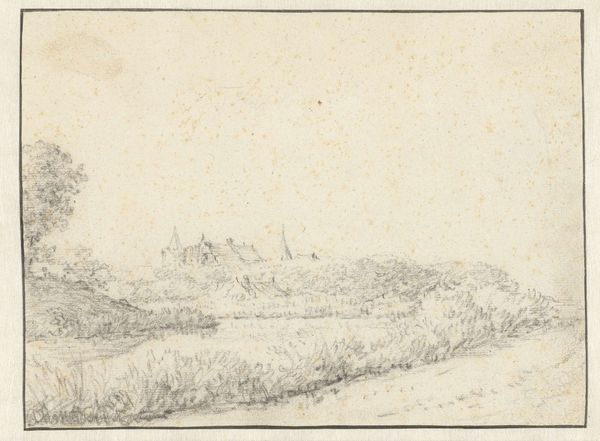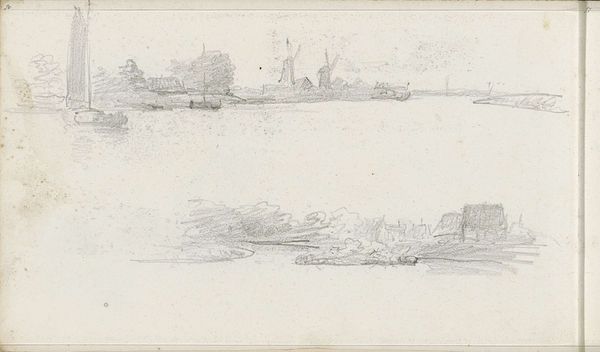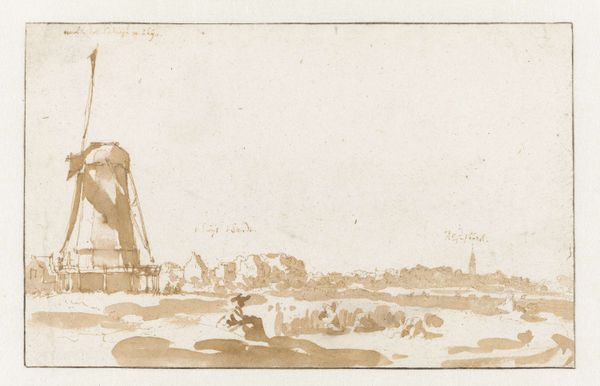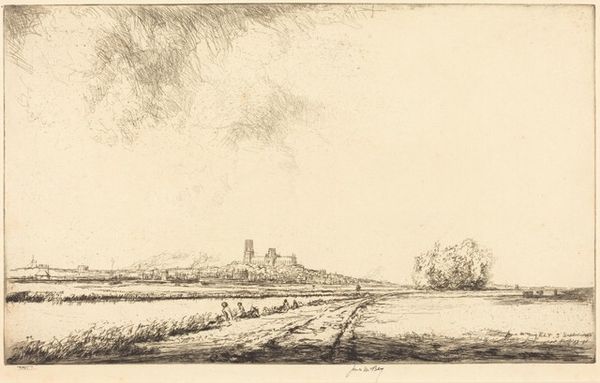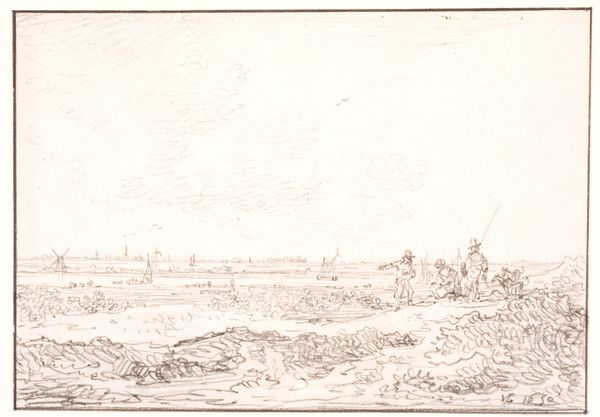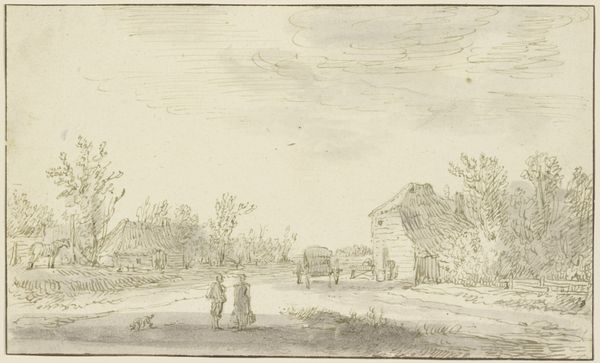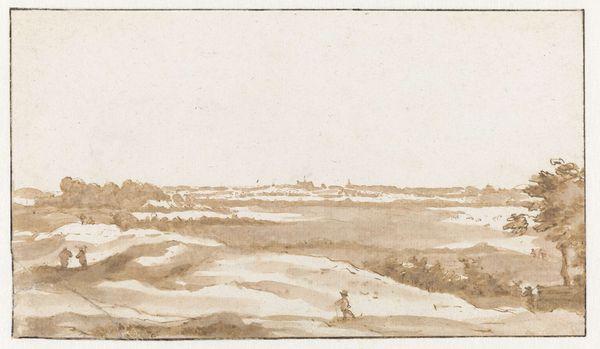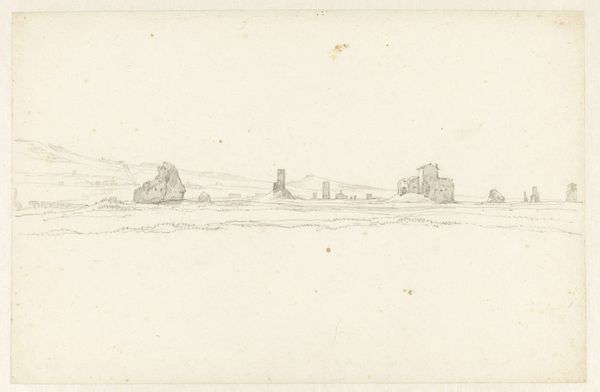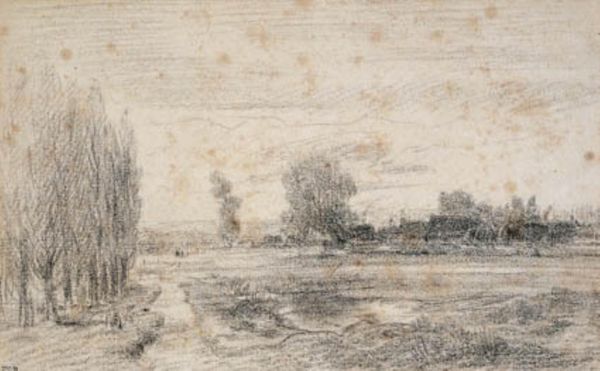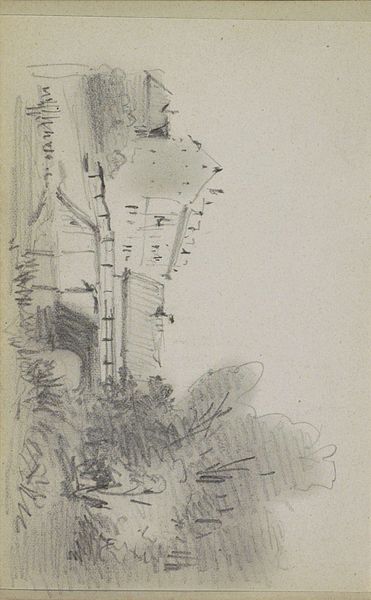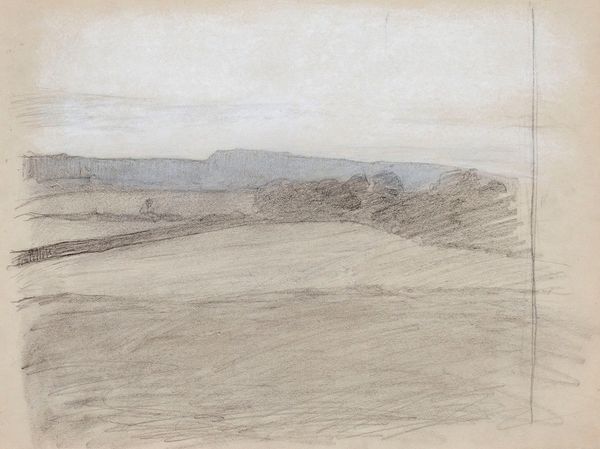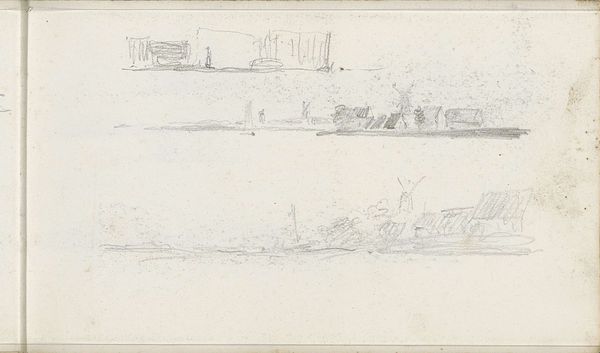
drawing, paper, ink
#
drawing
#
baroque
#
dutch-golden-age
#
pencil sketch
#
landscape
#
paper
#
ink
#
line
#
realism
Copyright: Public domain
Editor: This is Rembrandt van Rijn's "View of Amstel river in Amsterdam" from 1641, created with ink on paper. I find the vastness of the landscape striking, but it feels somewhat…lonely? What do you see in this piece beyond just the depicted scenery? Curator: I see a reflection of the social and political landscape of the Dutch Golden Age. Consider the economic prosperity of the Netherlands at this time, fueled by trade and colonialism. Rembrandt's choice to depict this scene so plainly – a solitary figure against an expansive landscape – speaks volumes. Editor: How so? Curator: Isn't it telling that despite Amsterdam's burgeoning wealth and power, the emphasis is on the individual and the land? The small figure could represent the working class, perhaps even enslaved people of color whose labor produced this wealth and contrasts sharply with the economic activity occurring in Amsterdam. Does this shift how you view the drawing's vastness? Editor: It does. The figure suddenly appears even more isolated. Was Rembrandt commenting on social inequality? Curator: Perhaps not explicitly. But by placing this figure in the foreground, against a landscape that benefited from global exchange, Rembrandt subtly acknowledges the complex realities of Dutch society at the time. The scene encourages us to question who benefits from "progress" and at what cost. The drawing prompts viewers to consider questions of labor, value, and visibility. What do you take away from it now? Editor: I now see how seemingly simple art can spark conversations about identity, class, and social justice in ways I hadn't anticipated. Curator: Indeed. The personal and the political are often intertwined in art, encouraging reflection across generations.
Comments
No comments
Be the first to comment and join the conversation on the ultimate creative platform.
